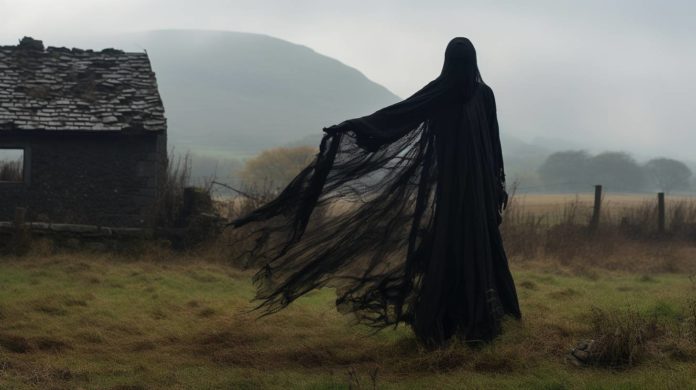The Banshee, a key figure in Irish folklore, is an otherworldly entity whose mournful wail is said to foretell an imminent death in the family she attends. Although primarily a figure of Irish lore, accounts of Banshee sightings have circulated throughout history, leaving an impact on local communities and shaping folklore across various cultures. Here, we provide an insight into some famous Banshee sightings throughout history.
The Banshee of the O’Neills
The O’Neills, one of Ireland’s most prominent families, reported multiple encounters with a banshee throughout the ages. One early sighting dates back to 1014 during the Battle of Clontarf when the banshee’s lament was heard before the death of the leading warrior, O’Neill Boru. Story of the Banshee’s cries subsequently travelled through generations, imparting a sense of respect and foreboding for the spirit among the local community.
The Banshee of the O’Briens (1437)
The O’Briens, descended from Brian Boru, a High King of Ireland, are closely associated with a banshee in their lineage. A well-documented account is a banshee sighting before the death of King James I of Scotland. It is said that the banshee was witnessed by none other than the Earl of Desmond, an O’Brien clan member. He noticed a lone woman washing blood-stained clothes while moaning, a variation of the Banshee known as the Bean Nighe. Following this incident, King James I met his untimely end, contributing to the Banshee’s solemn standing among the O’Briens especially and the broader society.
Anne Boleyn’s Banshee (1536)
England, not generally connected with Banshees, carries a notable sighting related to Queen Anne Boleyn. Sentenced to death by her husband King Henry VIII, Boleyn was allegedly haunted by a Banshee on the eve of her beheading at the Tower of London. Though this tale strays from the traditional Irish banshee reporting, it had a significant impact on English folklore, adding a sense of eeriness to the tragic end of Queen Anne Boleyn.
The Banshee of Dunluce Castle (1639)
In Northern Ireland, Dunluce Castle has a banshee tale tied to its history. Legend has it that Maeve Roe, the lord’s daughter, was locked in the castle by her father for refusing an arranged marriage. She attempted to escape with her lover but drowned when their boat crashed against the rocks. Since then, her banshee cry is reported to echo through the castle and around the region, instilling in the local townsfolk a reverence for the supernatural.
These sightings, although separated by time, context and impacts, all share a similar strand of narrating an untimely death preceded by a somber visit from the Banshee. The accounts have shaped and continue to influence community sensibilities toward death and the supernatural, underscoring the indelible influence such folklore elements can have on cultural heritage.

 The Banshee
The Banshee